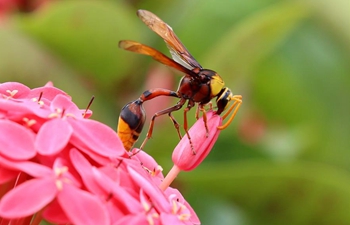WASHINGTON, July 12 (Xinhua) -- Chinese scientists have found that tree shrews could eat hot chili peppers due to a subtle mutation in the receptor that detects the pungency.
A study published on Thursday in the open-access journal PLOS Biology showed that this close relative of primates actively fed on chili peppers and, in contrast with mice, did not reduce their food intake as the concentration of capsaicin increased.
Capsaicin are chemicals that deter almost all mammals from eating them, but humans may develop a tolerance and even a liking for it. Now, tree shrews join in.
The researchers from the Kunming Institute of Zoology under the Chinese Academy of Sciences speculated that this was an evolutionary adaptation to enable tree shrews to cope with a peppery plant that makes up part of their diet.
Although chili peppers do not grow in the tree shrew's environment, a plant that produces abundant capsaicinoids named Piper boehmeriaefolium does, and is an important food source for the tree shrew.
Capsaicinoids, including the capsaicin, could trigger the activation of TRPV1, an ion channel found on the surface of pain-sensitive cells in the tongue and elsewhere, according to the study.
The ion channel normally alerts animals to the presence of harmful heat, and that's why capsaicinoids induce a sharp burning sensation.
The researchers found that the levels of TRPV1 in mice and tree shrews were similar and both mammals were similarly responsive to other painful stimuli, but the ion channel in the tree shrew was much less responsive to capsaicin.
Then they found that TRPV1 proteins of mice and tree shrews differed by a single amino acid in the binding pocket for capsaicin, a mutation that can reduce the binding ability, and thus pain-inducing potential, of capsaicin in the tree shrew's form of the protein.
The ability to feed on this plant while most other species avoid it was potentially an important driver for the spread of the TRPV1 mutation through the tree shrew population over time, according to the study.

















